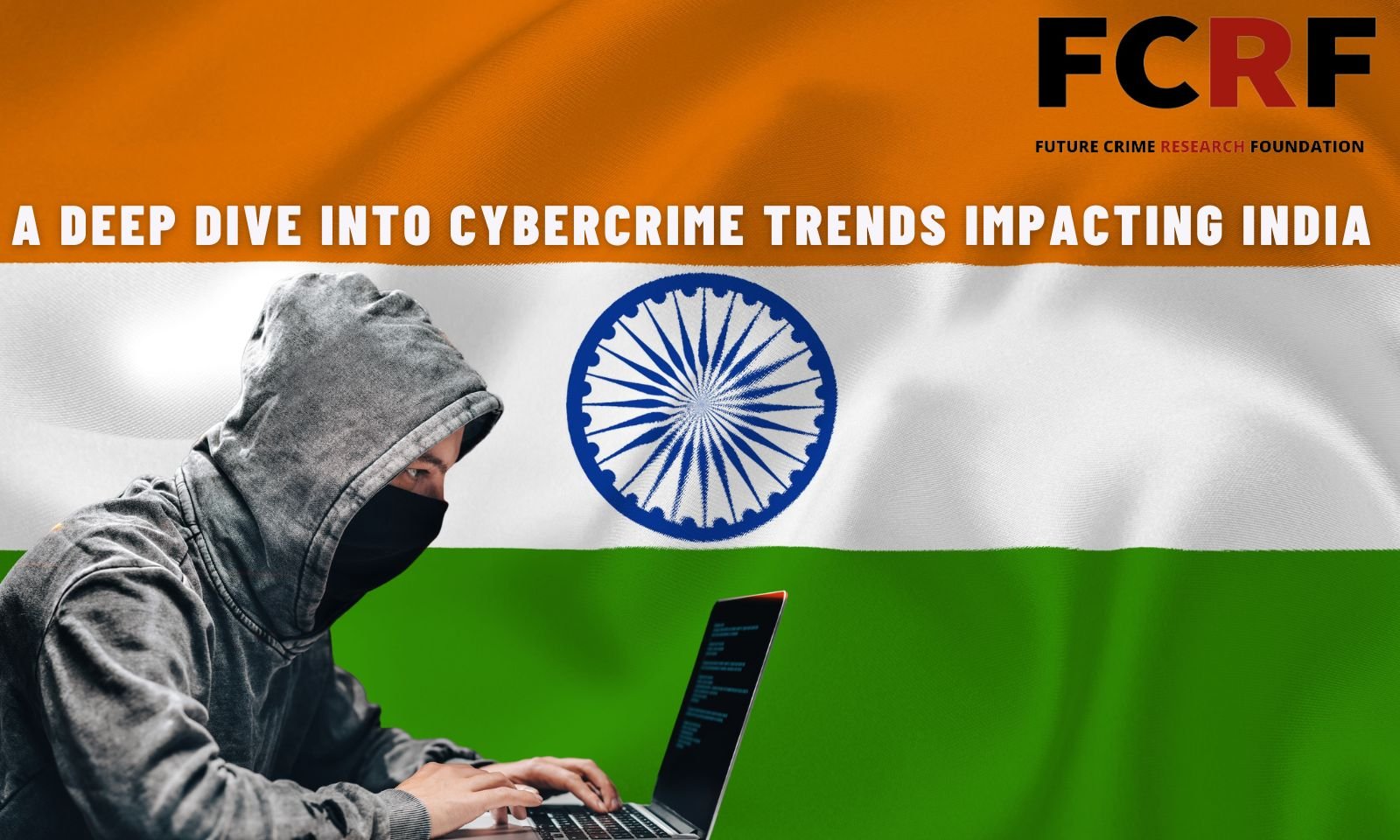Cyber Crime
FCRF Report: India Battling Cyber Threats with Online Financial Fraud Dominating at 77.41%

NEW DELHI: A recent comprehensive analysis of cybercrime trends in India, conducted by the Future Crime Research Foundation (FCRF), unveils a pervasive and concerning pattern. The study, titled ‘A Deep Dive into Cybercrime Trends Impacting India,’ scrutinizes the period from January 2020 to June 2023, spotlighting online financial fraud as the dominant form of cybercrime, accounting for an alarming 77.41 percent of all reported cases during this timeframe.
The Alarming Dominance of Online Frauds
The Future Crime Research Foundation(FCRF) is a non-profit startup incubated at IIT Kanpur, specializing in research related to cybersecurity, digital crime, fraud risk management, cyber laws, and cyber forensics. The FCRF’s report breaks down cybercrimes into distinct categories, shedding light on the multifaceted nature of this pervasive challenge.
Financial fraud emerged as the frontrunner, representing over three-quarters of all cybercrimes reported. This underscores the urgent need for enhanced cybersecurity measures and increased awareness among individuals and organizations alike.
CLICK HERE TO DOWNLOAD THE FULL REPORT
Online Financial Fraud (77.41%)
Online financial fraud is the dominant category, encompassing a wide range of cybercrimes aimed at exploiting individuals’ financial information and assets. Quoting FCRF report Economics Times report said financial frauds accounted for over 75 pc cyber crimes since 2020. Key subcategories include:
Business Email Compromise/E-mail Takeover (0.24%): Although relatively low in percentage, this type of attack can result in significant financial losses and data breaches.
Debit/Credit Card Fraud/Sim Swap Fraud (11.27%): Card-related fraud remains a significant threat, with criminals targeting card information and SIM cards for unauthorized access.
Demat/Depository Fraud (0.61%): Manipulating demat accounts for fraudulent activities is less prevalent but requires attention.
E-Wallet Related Fraud (3.45%): E-wallets’ popularity makes them a target for fraudsters, emphasizing the need for heightened security.
Fraud Call/Vishing (5.32%): Fraudulent calls and vishing remain a significant threat, requiring users to exercise caution when divulging personal information.
Internet Banking Related Fraud (9.28%): The prevalence of online banking-related fraud highlights the importance of securing online financial transactions.
UPI Fraud (47.25%): Unified Payments Interface (UPI) fraud stands out as the most prevalent online financial fraud, signaling a pressing need for improved UPI security.
Online and Social Media-Related Crime (12.02%)
Within the realm of online and social media-related crime, several subcategories were identified, each with its unique characteristics:
Cheating by Impersonation (1.71%): Impersonation emerged as a prevalent tactic used by cybercriminals to exploit victims’ trust, highlighting the need for vigilance in online interactions.
Cyber Bullying/Stalking/Sexting (3.87%): Instances of online harassment and sexting underscore the importance of fostering a safe digital environment.
Email Phishing (0.13%): Although relatively low, the persistence of email phishing attacks indicates the importance of ongoing efforts to combat this threat.
Fake/Impersonation Profile (2.38%): Creating fake profiles for malicious purposes remains a common tactic in the cybercrime landscape.
Impersonating Email (0.03%) and Intimidating Email (0.02%): While less prevalent, these tactics still pose a threat, emphasizing the need for email security awareness.
Online Job Fraud (0.94%): Job-related fraud exploits individuals’ desperation for employment, necessitating caution when pursuing online job opportunities.
Online Matrimonial Fraud (0.10%): Deceptive practices in online matrimonial platforms are less common but warrant users’ vigilance.
Profile Hacking/Identity Theft (2.37%): The relatively high percentage in this category highlights the need for robust online profile security.
Provocative Speech for Unlawful Act (0.47%): The use of online platforms to incite unlawful activities is a moderate concern, necessitating measures to curb such content.
Hacking/Damage to Computer, Computer System, etc. (1.57%)
This category involves unauthorized access, tampering, and damage to computer systems, with notable subcategories:
Damage to Computer, Computer System, etc. (0.11%): While less common, intentionally causing harm to computer systems requires attention.
E-mail Hacking (0.38%): Unauthorized email access is relatively common, necessitating robust email security measures.
Tampering with Computer Source Documents (0.05%): Altering computer source documents may have significant consequences, warranting preventative measures.
Unauthorised Access/Data Breach (0.92%): Unauthorized access and data breaches pose a substantial threat to cybersecurity.
Website Defacement/Hacking (0.11%): Website defacement, while less common, remains an issue to address.
Other Cyber Crimes (8.18%)
This category encompasses a wide range of cybercrimes, highlighting the diverse nature of online threats. BQ Prime in its report said the FCRF stated that “other notable categories’ contributed to 9% of the online crimes which delve into several other cybercrime categories with smaller but notable percentages, including online cyber-trafficking, online gambling, ransomware, cryptocurrency crime, and cyber terrorism.”
The Deepfake Dilemma: A Glimpse into Synthetic Threats
The report also addresses the emergence of deepfake technology in cybercrimes, accounting for a modest 0.09% of total cybercrimes. Deepfake-related crimes, including sextortion and synthetic audio-video manipulation, exploit AI-generated content, blurring the lines between reality and fiction. Proactive measures are necessary to combat these synthetic threats and maintain digital trust.
The Imperative for Vigilance and Preparedness
In light of these cybercrime trends, India faces a complex landscape dominated by online frauds and financial crimes. Enhanced security measures, increased public awareness, and collaborative efforts among stakeholders are essential to mitigate these risks and build a secure digital future for the nation. The rise of UPI fraud and the emergence of deepfake-related crimes make it imperative for India to stay vigilant and prepared in the face of evolving cyber threats.
Follow The420.in on
Telegram | Facebook | Twitter | LinkedIn | Instagram | YouTube
